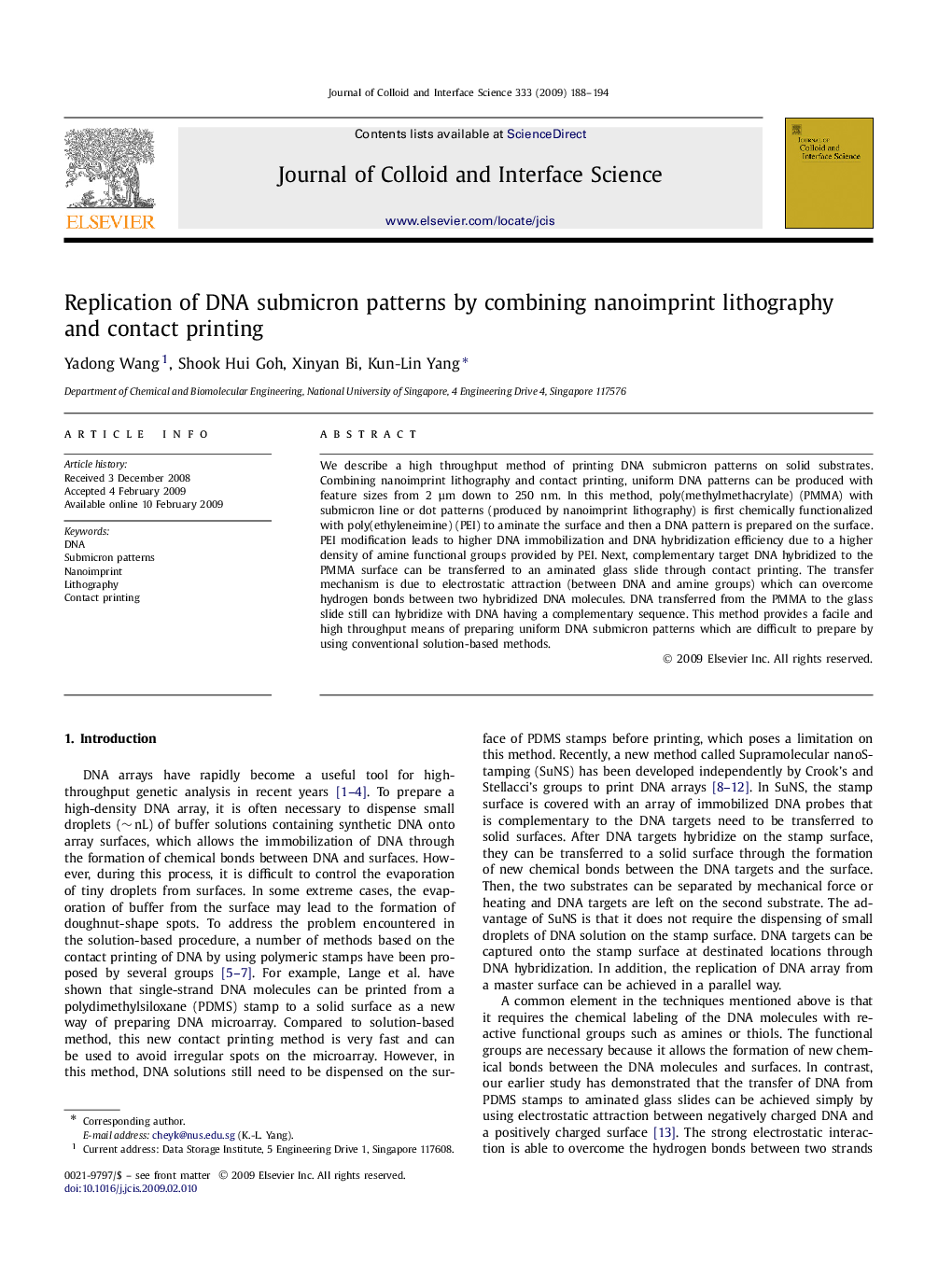| Article ID | Journal | Published Year | Pages | File Type |
|---|---|---|---|---|
| 610964 | Journal of Colloid and Interface Science | 2009 | 7 Pages |
We describe a high throughput method of printing DNA submicron patterns on solid substrates. Combining nanoimprint lithography and contact printing, uniform DNA patterns can be produced with feature sizes from 2 μm down to 250 nm. In this method, poly(methylmethacrylate) (PMMA) with submicron line or dot patterns (produced by nanoimprint lithography) is first chemically functionalized with poly(ethyleneimine) (PEI) to aminate the surface and then a DNA pattern is prepared on the surface. PEI modification leads to higher DNA immobilization and DNA hybridization efficiency due to a higher density of amine functional groups provided by PEI. Next, complementary target DNA hybridized to the PMMA surface can be transferred to an aminated glass slide through contact printing. The transfer mechanism is due to electrostatic attraction (between DNA and amine groups) which can overcome hydrogen bonds between two hybridized DNA molecules. DNA transferred from the PMMA to the glass slide still can hybridize with DNA having a complementary sequence. This method provides a facile and high throughput means of preparing uniform DNA submicron patterns which are difficult to prepare by using conventional solution-based methods.
Graphical abstractThe combination of nanoimprint lithography and contact printing provides a facile and high throughput means of preparing uniform DNA submicron arrays.Figure optionsDownload full-size imageDownload as PowerPoint slide
